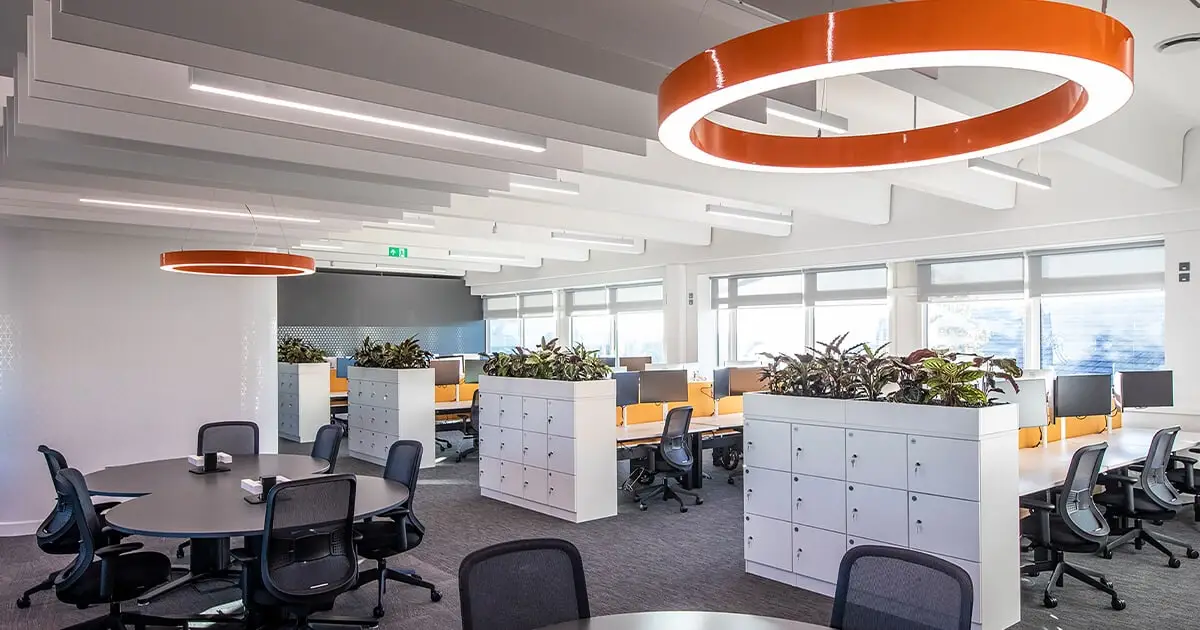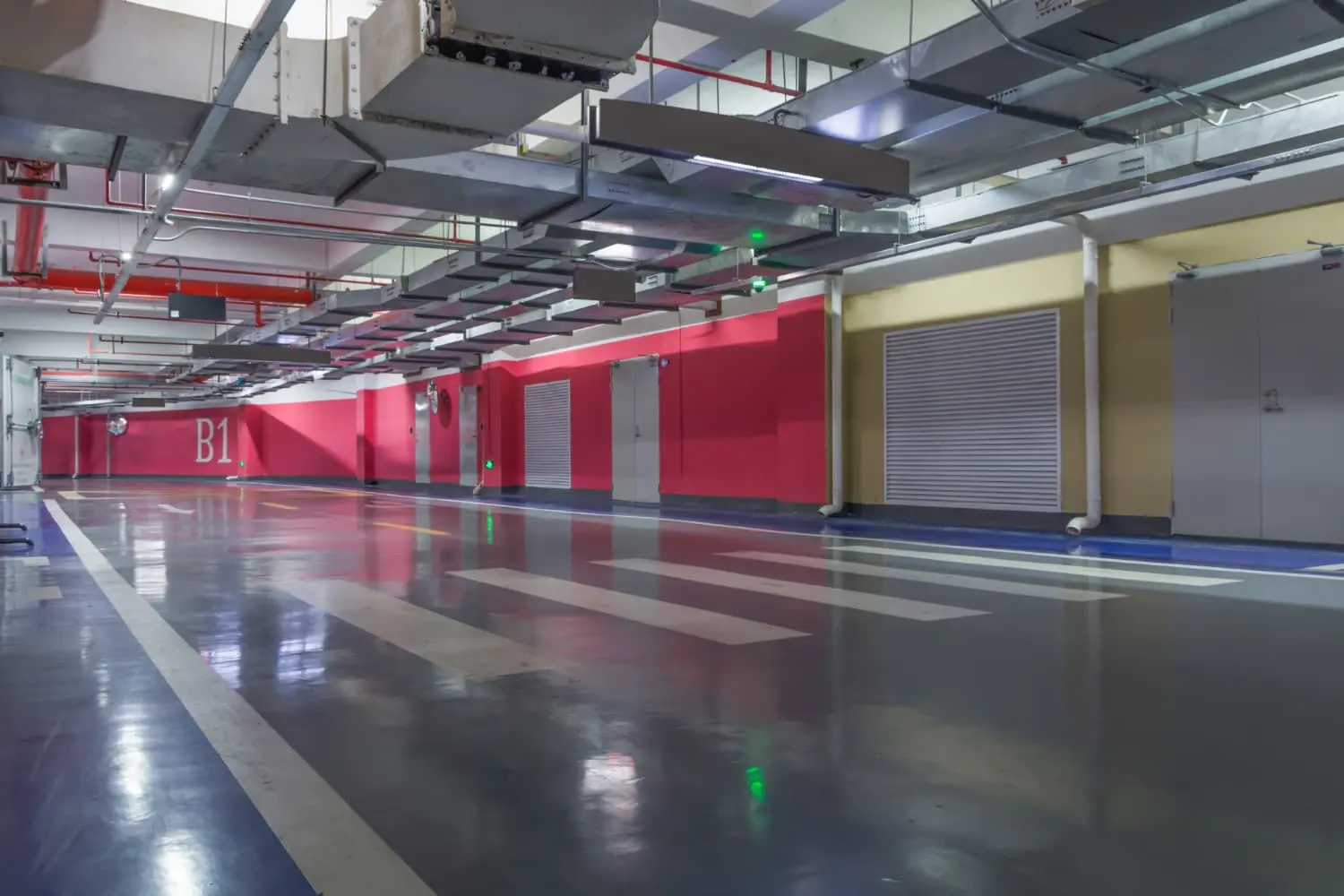
Workplace Lighting Regulations in the UK: Ensuring Safety and Productivity
Learn about UK workplace lighting regulations ensuring safety and productivity. Explore types and standards for effective, compliant lighting solutions.
An essential part of an airport’s infrastructure, runway lights guarantee the security and efficacy of aircraft processes, particularly at night and with little visibility. These lights guide pilots throughout takeoff and landing and flow as solid visual resources.
The distinct colors, spacing, and functions of each runway light provide a system for pilots to take directions and perform safe landings.
Vorlane will discuss the multiple runway lights here, their distinct roles in aviation safety, and an explanation of their colors and spacing.
Color: White is the predominant hue of the runway edge lights. But these white lights turn yellow at the final 2,000 feet or the last second half of the remaining runway extent, whichever is shorter. Pilots become alert when the light turns yellow when approaching the close of the runway.
Spacing: The runway alert lights are installed 200 feet away. With consistent spacing, the runway border will be easier for pilots to see since it forms a continuous, distinct outline, especially in poor light.
Purpose: Runway edge lights are primarily used to mark the boundaries of the runway. These lights allow the pilots to maintain proper queuing during landing and takeoff. Moreover, these lights keep the pilots focused on the airfield and stay clear of departures that could cause jerks. Pilots will stay alert by the runway’s remaining length when it turns yellow near its end, which facilitates safe landing and stopping operations.
Color: The centerline lights of the runway are predominantly white in color. The runway’s final 3,000 feet blinks red and white lights upon alternate. All of the centerline lights turn red for the last 1,000 feet. When landing, this hue shift assists pilots in determining how far they still have to go on the runway.
Spacing: Runway lights are placed 50 feet apart along the centerline of the runway. The close spacing provides a constant visual reference, which is especially helpful in low-visibility situations like dense fog or continuous rain.
Purpose: Runway centerline lights provide Critical alignment advice along the runway’s centerline. They guarantee that pilots stay focused on the runway by assisting them in maintaining the proper course during landing. Pilots are alerted to the leftover length’s runway by all-red lights in the last 1,000 feet and the tweaking red and white lights in the final 3,000 feet. This light alternation helps in safe and slowed landing, especially in wild weather or at night.
Color: White lights are used in the touchdown zone of the runway. Because of their excellent visibility and striking contrast with the runway, incoming pilots can immediately distinguish them thanks to their color.
Spacing: Such lights are installed 100 feet apart on both sides of the runway centerline. This balanced positioning is visible in the touchdown zone.
Purpose: Marking the touchdown zone, typically the initial 3,000 feet or the initial third on a runway. This zone is shorter and the best spot for an airplane to touch down on the runway when landing. Particularly in low visibility situations, TDZLs help pilots locate the exact spot for a safe landing by focusing on the crucial area. In order to maximize the runway distance known for slowing and halting, they offer pilots visual direction to help them synchronize their approach and descent.
Color: The white flashing lights are placed on the Runway end Identifier. The flashing differentiates them from various airport lights, making them highly noticeable and prominent.
Purpose: REILs are placed by the runway end to maintain the threshold. Their primary function is to enable pilots to identify the runway end when approaching quickly. This is particularly helpful while operating at night or when the weather restricts visibility. The white lights on the aircraft provide a clear visual indication to help pilots identify the runway point quickly and synchronize their approach for a safe landing. REILs improve pilots’ situational awareness and across-the-board landing safety by enhancing the view of the runway end.
Color: The green lights are placed on the runway approach end, while the departure ends with red threshold lights. When viewed from the point of the departing aircraft, the runway ends at the red light and starts to land at the green light.
Spacing: The runway threshold has a continuous row of lights. This produces an arc of lights that never stops, indicating where the landing area begins.
Purpose: Threshold lights are strategically placed to ensure pilots have a clear visual reference point for the start and end of the runway. The green lights at the start indicate the beginning of the runway open for landing oncoming aircraft. Such light placement helps the pilots to land in the approved location and accurately align their planes. Pilots will determine when they need to be in the takeoff zone through red lights, which signify the end of the runway. For safe runway execution, this tracing is essential because it gives pilots distinct visual clues for both takeoffs and landings.
Color: The taxiway lights are blue in color. Their unique light colors help distinguish them from other runway lights and facilitate pilots’ recognition while flying over the airport premises.
Spacing: The distance between taxiway lights may change depending on the airport’s design and specifications. The position of these lights is on boundaries to guarantee that the path is well-defined. The variation in spacing allows for various taxiway lengths and layouts while holding stable visual guidance.
Purpose: Airport taxiway lights serve multiple purposes. The main objective is to guide terminals, runways, and other parts of the airport. They mark the designated paths for aircraft to follow, separate taxiing aircraft from other vehicles and pedestrians, and even provide directional cues for specific plots like turns and exits. These lights decrease the possibility of pilots deviating from the approved course by clearly marking the boundaries of taxiways. This recommendation is critical while operating at night or in low visibility with fewer visual indications. By enabling safe and orderly aircraft movement throughout the airport, taxiway lights contribute to seamless and effective ground operations.
Pilots must be aware of the colors of the runway and taxiway lights since they serve as vital visual cues for flying and navigation. Every light color has a distinct meaning and purpose that enhances airport operations’ general effectiveness and safety.
These color-coded lights provide a robust visual system that improves pilot situational awareness and guarantees safe and effective airport operations in various scenarios.
Adequate spacing of runway lights is crucial to guaranteeing that pilots have steady visual clues to assist them during different stages of flying operations. There are specific spacing requirements for each runway light which are according to its purpose and functions.
These runway light spacing requirements improve safety and operational efficiency by giving pilots the visual data they need to guide the runway environment successfully in various situations.
Pilots must understand runway lights to steer safely between landing, takeoff, and taxiing. With the distinct color and spacing, each kind of light is essential to sustaining good visibility and guaranteeing reliable functions at the airport.
The centerline lights guarantee exact alignment down the runway, whereas runway edge lights serve as crucial boundary illuminators. Pilots can find the best landing spot with the help of Touchdown Zone Lights and quickly identify the runway end with REILs. Taxiway lights, meanwhile, make ground activities safe and effective.
You’ll understand the significance of these runway guiding lights the next time you’re flying at night. Please feel free to contact Vorlane to receive more aviation views and to express your opinions in the comments!
The many shades of runway lights have different functions to improve pilot safety and awareness during different flight operations:
For a steady guide along the runway centerline, 50-foot spacing is used for runway centerline lights. The close positioning of such lights ensures that the pilot has constant visual reference, which helps them in crucial takeoff and low-visibility landings. Because of such lights, the pilot’s ability to maintain alignment and focus on the runway facilitates safer landings.
The runway end has flashing white lights that let the pilot identify the end position. Such lights are Runway End Identifier Lights (REIL). They offer prompt recognition of the runway ends during the process, particularly at night or in bad visibility. The high-level flashing lights facilitate pilots’ direct identification of the runway point, guaranteeing a precise and safe landing alignment.

Learn about UK workplace lighting regulations ensuring safety and productivity. Explore types and standards for effective, compliant lighting solutions.

Discover the benefits of HID headlights for vehicles, including increased brightness, energy efficiency, and durability.

Discover the importance of selecting proper parking lot lighting for safety and aesthetics. Learn about energy-efficient options to enhance your
Sign up to get the latest product announcement and offer.
*We respect your confidentiality and all information are protected.


 | This LED Industry Research Report Is Worth 10,000 Dollars!Want to get reliable industry data to support your LED business planning? In this report, you will:
*Submit your email to download this file. Your personal info will not be shared to any 3rd-party person or organizations. |
WhatsApp us
*We respect your confidentiality and all information are protected.
